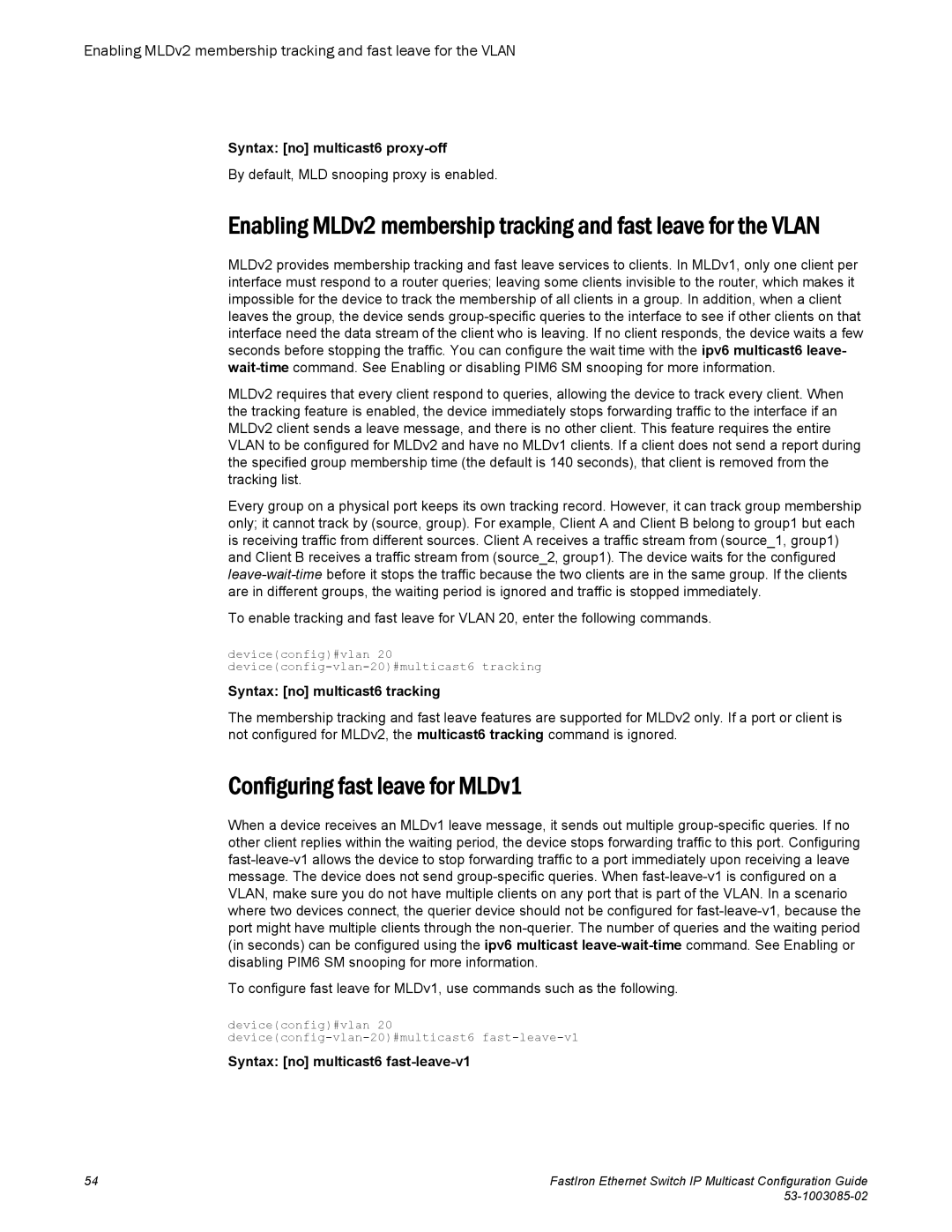Enabling MLDv2 membership tracking and fast leave for the VLAN
Syntax: [no] multicast6 proxy-off
By default, MLD snooping proxy is enabled.
Enabling MLDv2 membership tracking and fast leave for the VLAN
MLDv2 provides membership tracking and fast leave services to clients. In MLDv1, only one client per interface must respond to a router queries; leaving some clients invisible to the router, which makes it impossible for the device to track the membership of all clients in a group. In addition, when a client leaves the group, the device sends
MLDv2 requires that every client respond to queries, allowing the device to track every client. When the tracking feature is enabled, the device immediately stops forwarding traffic to the interface if an MLDv2 client sends a leave message, and there is no other client. This feature requires the entire VLAN to be configured for MLDv2 and have no MLDv1 clients. If a client does not send a report during the specified group membership time (the default is 140 seconds), that client is removed from the tracking list.
Every group on a physical port keeps its own tracking record. However, it can track group membership only; it cannot track by (source, group). For example, Client A and Client B belong to group1 but each is receiving traffic from different sources. Client A receives a traffic stream from (source_1, group1) and Client B receives a traffic stream from (source_2, group1). The device waits for the configured
To enable tracking and fast leave for VLAN 20, enter the following commands.
device(config)#vlan 20
Syntax: [no] multicast6 tracking
The membership tracking and fast leave features are supported for MLDv2 only. If a port or client is not configured for MLDv2, the multicast6 tracking command is ignored.
Configuring fast leave for MLDv1
When a device receives an MLDv1 leave message, it sends out multiple
To configure fast leave for MLDv1, use commands such as the following.
device(config)#vlan 20
Syntax: [no] multicast6 fast-leave-v1
54 | FastIron Ethernet Switch IP Multicast Configuration Guide |
|
